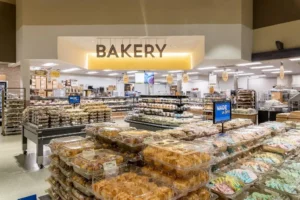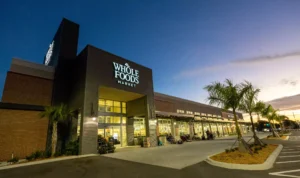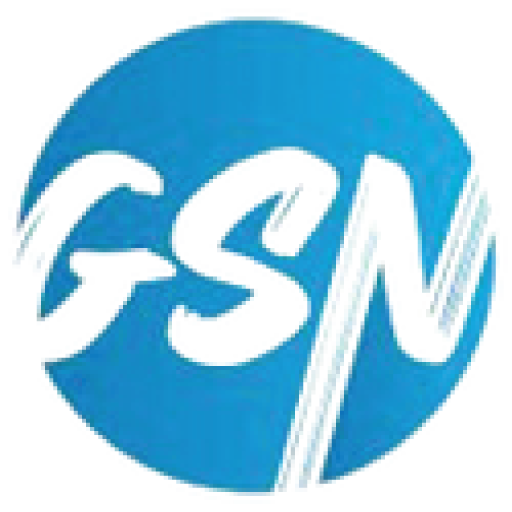Introduction to Grocery Retail in the USA
The grocery retail landscape in the USA is vast and competitive. With a population exceeding 330 million, supermarkets play a crucial role in providing essential goods. The sector has evolved tremendously, adapting to new trends, consumer behaviors, and technological advancements. In this blog post, we’ll explore the top grocery retail chains in the USA, analyzing their strengths and what makes them leaders in the market.
Top Grocery Retailers in the USA
Several supermarket chains have established themselves as leaders in the industry, catering to different segments of consumers. Below are the top players dominating grocery retail USA.
1. Walmart 
Walmart, an American multinational retail corporation, has a significant presence in the grocery market. It operates more than 4,700 stores across the USA. Walmart has redefined how Americans shop by offering competitive prices and convenience. The company emphasizes its one-stop-shop model, where customers can purchase groceries alongside other household essentials.
Walmart’s low-price guarantee remains its biggest strength in the USA grocery retail market. Walmart’s brand identity revolves around affordability. Over the years, it has also enhanced its online shopping capabilities, introducing curbside pickup and delivery services.
2. Kroger

Kroger, founded in 1883, is another retail giant. It’s currently the second-largest grocery retailer in the USA after Walmart. Kroger operates under different banners such as Ralphs, Fred Meyer, and Harris Teeter, serving millions of customers every week. Their focus on fresh food and excellent customer service sets them apart.
Kroger has also prioritized sustainability efforts in recent years, committing to reducing waste and improving supply chain efficiency. Their Simple Truth organic brand has resonated well with health-conscious consumers.
3. Costco

Costco is primarily a membership-based warehouse club that offers bulk items at discounted rates. Though not a traditional supermarket, Costco’s bulk-purchase model has found immense popularity, especially among large families and businesses. Their grocery section covers fresh produce, meats, dairy, and household staples.
Costco’s commitment to quality products at bulk prices has earned them a dedicated customer base. With more than 500 locations across the USA, Costco is a dominant force in the grocery retail landscape.
4. Albertsons

Albertsons, with over 2,200 stores, is one of the largest grocery chains in the USA. They operate under various banners like Safeway, Jewel-Osco, and Vons, allowing them to cater to different regional markets. Their personalized shopping experience and focus on quality service attract loyal customers.
Albertsons has also embraced digitalization, offering online shopping options with delivery and pickup services. Their commitment to community and local sourcing contributes to their strong brand reputation.
5. Whole Foods Market

Whole Foods Market, owned by Amazon, focuses on organic and natural products. With over 500 stores, it has positioned itself as a high-end grocery retailer. Whole Foods’ premium pricing is balanced by the quality of its products, many of which are locally sourced and certified organic.
Their acquisition by Amazon in 2017 has further integrated Whole Foods into the digital shopping space. Whole Foods has since adopted seamless online ordering, leveraging Amazon’s advanced delivery systems.
Trends Shaping the USA Grocery Retail Market
The grocery retail market in the USA is constantly evolving. As consumer expectations change, grocery retailers must adapt to remain competitive. Below are some key trends that are shaping the industry:
1. E-commerce Growth
The rise of e-commerce in grocery retail cannot be ignored. Online grocery shopping saw exponential growth during the COVID-19 pandemic. Today, customers appreciate the convenience of home delivery and curbside pickup. Retailers like Walmart and Kroger have expanded their online presence, offering robust digital shopping experiences.
The shift to online grocery shopping shows no signs of slowing down, and retailers are investing heavily in infrastructure to meet the growing demand.
2. Sustainability
Sustainability is becoming a top priority for consumers. From reducing plastic waste to sourcing local and organic products, grocery retailers are embracing eco-friendly practices. Chains like Kroger and Whole Foods have taken the lead, offering eco-friendly packaging and committing to sustainable farming practices.
As the demand for sustainable shopping grows, retailers are being held accountable for their environmental impact, influencing their sourcing and packaging choices.
3. Health and Wellness Focus
There has been a noticeable shift toward health and wellness in grocery retail USA. Consumers are more informed about their food choices, opting for organic, non-GMO, and gluten-free products. This has led to the expansion of health-focused sections in supermarkets, with retailers dedicating more shelf space to organic and specialty foods.
Brands like Simple Truth at Kroger and 365 by Whole Foods have capitalized on this growing trend, offering a wide variety of health-conscious products.
4. Private Label Expansion
Private label brands have gained significant traction in the grocery retail market. Offering similar quality to national brands at lower prices, these brands appeal to budget-conscious shoppers. Retailers like Walmart, Kroger, and Costco have expanded their private label offerings, catering to a wide range of consumer preferences.
The success of private label products demonstrates how grocery retailers are responding to price-sensitive consumers while maintaining high-quality standards.
5. Technology Integration
Grocery retailers are increasingly relying on technology to enhance the shopping experience. From self-checkout kiosks to AI-driven inventory management, technology is playing a crucial role in streamlining operations. Online grocery shopping platforms, mobile apps, and personalized promotions through data analysis are just a few examples.
With the rise of AI and automation, grocery retailers are expected to continue integrating technology to boost efficiency and improve customer service.
Challenges Faced by USA Grocery Retailers
Despite the significant advancements, USA grocery retailers face several challenges that they need to navigate.
1. Supply Chain Disruptions
The global supply chain has been heavily impacted in recent years, particularly during the COVID-19 pandemic. Grocery retailers have faced challenges in stocking shelves, leading to shortages in certain products. Managing inventory effectively while balancing costs remains a major challenge.
Retailers like Walmart and Kroger have invested in diversifying their supply chains to minimize future disruptions.
2. Rising Operating Costs
Inflation and increasing labor costs have put pressure on grocery retailers. While some have raised prices to offset these costs, others are exploring automation and AI solutions to reduce their dependency on human labor. These rising costs have also led to a stronger focus on cost-cutting measures across various operational areas.
3. Intense Competition
The grocery retail market in the USA is highly competitive. With numerous players, including traditional supermarkets, warehouse clubs, and online retailers, each vying for consumer attention, staying relevant can be a challenge. Retailers must differentiate themselves through pricing, product offerings, and customer service.
As competition grows, brand loyalty becomes increasingly important for retailers seeking to maintain their market share.
Future of Grocery Retail USA
The future of grocery retail USA is promising yet challenging. Retailers will need to continuously adapt to changing consumer preferences and technological advancements. We expect the following developments to play a pivotal role:
1. Automation and Robotics
Automation is likely to revolutionize the grocery retail sector. From robot-assisted stock management to fully automated stores, the integration of robotics will enhance efficiency and reduce operational costs. Leading retailers are already experimenting with automated checkout systems and robotic fulfillment centers.
2. Sustainability as a Core Strategy
As environmental concerns intensify, sustainability will become a cornerstone of grocery retail strategy. Retailers will be expected to offer environmentally friendly products and implement sustainable business practices, from sourcing to packaging.
Eco-conscious consumers are driving demand for sustainable shopping, and grocery retailers will have to align with these expectations to remain competitive.
3. Personalized Shopping Experiences
Personalization will continue to be a significant trend in the grocery retail USA. By using data analytics and AI, retailers can offer personalized recommendations, discounts, and shopping experiences. The use of AI-driven algorithms will help retailers predict customer needs and improve overall satisfaction.
4. Expansion of Delivery Services
Grocery delivery services will expand further, with more retailers offering same-day or even one-hour delivery. As consumer expectations grow, retailers will need to optimize their logistics and delivery systems to keep pace with demand.
The convenience of same-day delivery will be a key factor in retaining customers and building loyalty in the grocery retail space.
Conclusion
The top grocery retail chains in the USA—Walmart, Kroger, Costco, Albertsons, and Whole Foods—continue to dominate the market, each offering unique advantages. These retailers are also at the forefront of embracing new trends, from e-commerce to sustainability.
In a fast-evolving industry, grocery retailers must stay nimble and innovative, adapting to consumer demands and leveraging technology. As we look ahead, the future of grocery retail in the USA is filled with possibilities, driven by innovation, sustainability, and personalized experiences.
By staying ahead of these trends and challenges, the top grocery retail USA will continue to play a crucial role in shaping how Americans shop for groceries.



